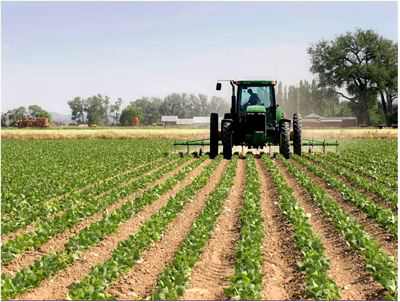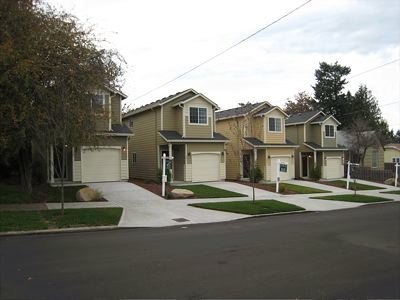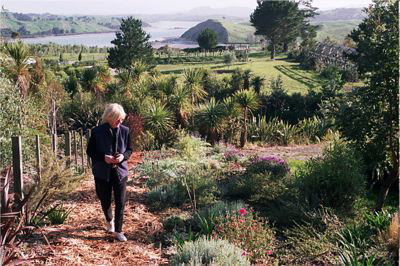No Light Rail in Vancouver!
Light rail costs too much, does too little
Land-Use Alternatives from Down Under
Smart growth isn’t the solution to sprawl, says Owen McShane of the Centre for Resource
Management Studies; it is merely just one more form of “carpet sprawl,” i.e., “urban
expansion across the countryside in an endlessly and seamless repeated pattern.”
McShane thinks that ordinary sprawl can be better because it creates a more diverse
landscape.
Which has more biodiversity: this . . .
At the Preserving the American Dream conference, Owen extolled the virtues of low-density
exurban development, which in the U.S. is often called “rural residential.” The area
in which Owen lives, north of Auckland, is made up of 5 to 10 acre lots. Since the
climate is similar to that of southern California, many of the residents grow olives
and other Mediterranean crops.
He calls his neighborhood a “park” and, because the densities are so low, it does
look park-like. Owen argues convincingly that the biodiversity of such exurban development
is much higher than industrial farms or dense cities.
So Owen argues that urban-rowth boundaries are not really necessary (1.1MB Word document).
I don’t believe he mentioned it at the conference, but it is interesting that many
towns in Europe look much like his rural residential area: houses mingled among the
farms. While Americans tend to believe that farms need hundreds or thousands of acres
to be economically viable, the average size of farms in the European Union is less
than 50 acres, and many are only a handful of acres — rural residential.
Owen’s PowerPoint show, which has some photos not found in his papers, can be downloaded
from here (29MB file).
Reprinted from The Antiplanner



